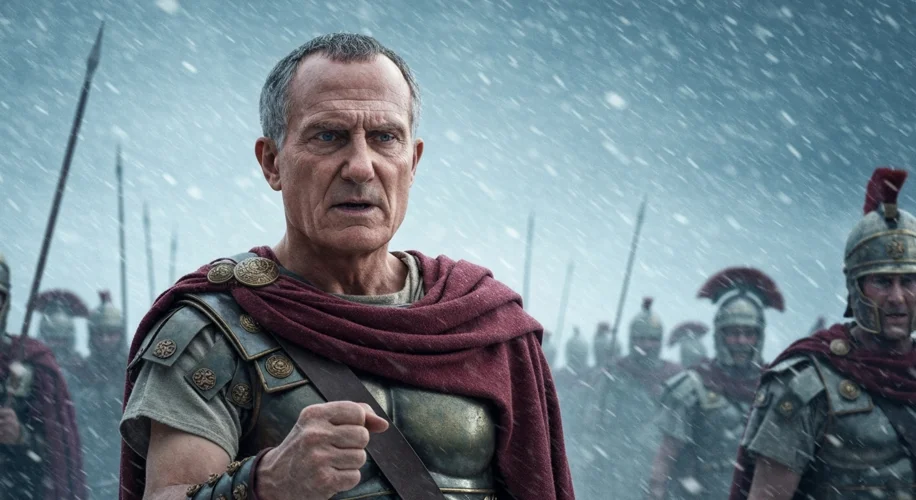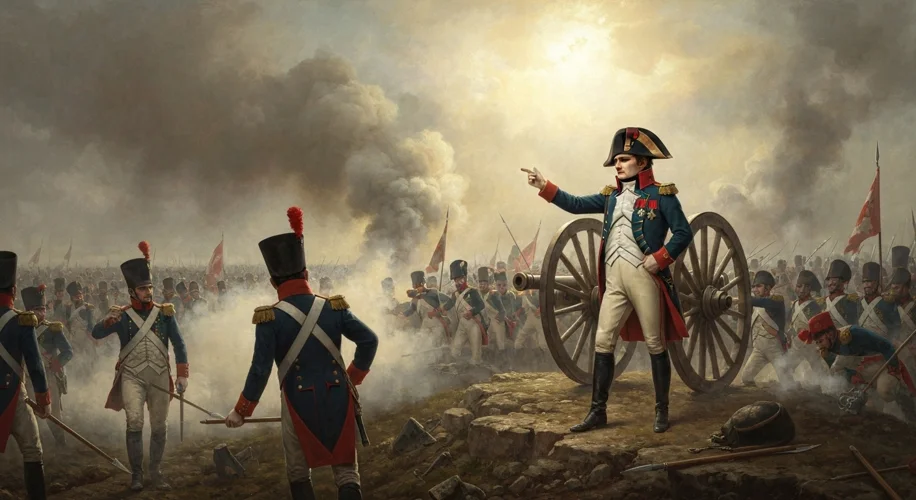The dust of ancient battlefields and the clamor of Napoleonic cannonades may seem worlds apart, separated by nearly two millennia. Yet, in the annals of military history, few figures loom as large, or cast as long a shadow, as Gaius Julius Caesar and Napoleon Bonaparte. Both men were not merely soldiers; they were strategists, innovators, and architects of empires, whose military genius fundamentally reshaped the course of Western civilization.
Caesar, born into the declining Roman Republic in 100 BCE, emerged from a Rome grappling with internal strife and the ambitious machinations of powerful generals. His early career was marked by political maneuvering, but it was on the battlefield that his legend truly began. His campaigns in Gaul (modern-day France) from 58 to 50 BCE stand as a testament to his strategic brilliance. Facing a confederation of Gallic tribes, Caesar employed a masterful blend of speed, deception, and ruthless efficiency.

His most famous exploit was perhaps the siege of Alesia in 52 BCE. Surrounded by a vast Gallic army led by Vercingetorix, Caesar did not retreat. Instead, he ordered the construction of two massive rings of fortifications: one facing inwards to contain Vercingetorix’s besieged army, and another facing outwards to repel the massive Gallic relief force. This audacious double circumvallation, a feat of engineering and logistical planning, allowed Caesar to defeat an enemy vastly outnumbering his own forces, securing his conquest of Gaul and cementing his reputation as an unassailable military mind.
Caesar’s strategies were characterized by an intimate understanding of his troops, meticulous logistical planning, and a willingness to take calculated risks. He understood the importance of morale, famously leading his men from the front and sharing their hardships. His ability to adapt to diverse terrains and enemies, from the swift cavalry of the Parthians to the disciplined legions of his Roman rivals like Pompey, demonstrated a profound strategic versatility. His writings, “Commentarii de Bello Gallico” (Commentaries on the Gallic War) and “Commentarii de Bello Civili” (Commentaries on the Civil War), offer invaluable insights into his thought processes, revealing a mind that was both analytical and daring.
Fast forward to the late 18th century, and the stage is set for another military titan: Napoleon Bonaparte. Born in Corsica in 1769, Napoleon rose through the ranks of the French army during the tumultuous French Revolution. He inherited a nation in turmoil, but also a military force imbued with revolutionary fervor and a new sense of national identity. Napoleon’s genius lay in his ability to harness this energy, creating a highly mobile and adaptable fighting force.

Napoleon’s operational strategy often involved “living off the land,” reducing his reliance on slow-moving supply trains. He pioneered the corps system, dividing his army into self-contained units capable of independent action but coordinated by a central command. This allowed for greater flexibility and speed, enabling him to concentrate his forces at decisive points on the battlefield. His campaigns, such as the lightning victory at Austerlitz in 1805 against the combined Austrian and Russian armies, showcased his mastery of maneuver, deception, and artillery concentration.
At Austerlitz, Napoleon famously feigned weakness, luring the allied forces onto a strategic bottleneck, the Pratzen Heights, which he then expertly assaulted with his main force. The result was a crushing defeat for the allies and a brilliant demonstration of Napoleon’s tactical acumen. His emphasis on speed, surprise, and decisive engagement—often encapsulated in his maxim, “The art of war is the art of the offensive”—defined the Napoleonic era.
Comparing Caesar and Napoleon reveals striking similarities and profound differences. Both were masters of logistics and troop morale. Both understood the psychological aspects of warfare, using propaganda and decisive victories to demoralize their enemies and inspire their own soldiers. Both were brilliant tacticians, capable of devising intricate battlefield plans on the fly.
However, Napoleon operated in an era of vastly different military technology. While Caesar fought with swords, shields, and javelins, Napoleon commanded armies armed with muskets, artillery, and vast logistical networks. Napoleon’s reliance on massed infantry formations and coordinated artillery barrages contrasts with Caesar’s more direct, close-quarters combat driven by the Roman legionary’s discipline and engineering capabilities. Furthermore, Napoleon’s ambition extended to political and social reorganization on a continental scale, a scope far exceeding Caesar’s more Rome-centric worldview.
The impact of both men is immeasurable. Caesar’s actions effectively ended the Roman Republic and paved the way for the Roman Empire, establishing a model of autocratic rule that would endure for centuries. His military and political reforms left an indelible mark on Western governance. Napoleon, on the other hand, spread the ideals of the French Revolution across Europe, inadvertently sowing the seeds of nationalism and liberalism that would shape the continent for the next century. His legal code, the Napoleonic Code, continues to influence legal systems worldwide.
In essence, Caesar and Napoleon represent distinct peaks of military genius, shaped by their times but united by an unyielding will to conquer and a profound understanding of how to mobilize human and material resources towards a singular goal. They remain the archetypes against which military leaders are still measured, their strategies echoing through the ages, a testament to the enduring power of bold vision and decisive action on the field of battle.

